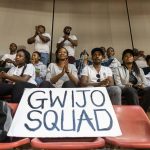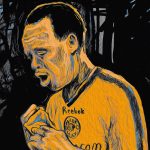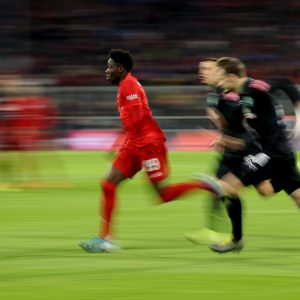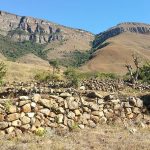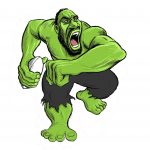Long Read | Rugby in post-colonial Zimbabwe
A look at the story of rugby in independent Zimbabwe through the Tsimba family, which produced two World Rugby Hall of Fame inductees in brothers Richard and Kennedy.
Author:
11 March 2020

It is 26 August 2019, a few hours before the Springbok squad for the Rugby World Cup in Japan is announced, and I am sitting with Kennedy Tsimba at a restaurant chain in Midrand. The weather is in that uncertain space between the last dregs of winter and a brief, some would say imaginary, Johannesburg spring.
It is warm enough to start drinking before noon. Zimbabwe-born Tendai “Beast” Mtawarira is about to be named in the Springbok squad to play in a tournament that will be his swan song in the green and gold. The man I am sitting with was born in Zimbabwe and is arguably the greatest club rugby player in South Africa never to have worn the Springbok jersey.
Shortly before Mtawarira turned two years old in 1987, a black Zimbabwean was selected for the Zimbabwe Sables. He was the first to be selected for the national rugby team and the first black player from any nation at the Rugby World Cup. I succumb to the weather and order a bold gin and tonic. Kennedy is more resilient.
Aside from wanting to be in a steady state of mind for the squad announcement, which he is on his way to attend in Randburg, a nonchalance to alcohol even in retirement is one of the professional traits he picked up from his older brother and fellow World Rugby Hall of Famer, Richard Utete Tsimba, the man whose legend we have met to discuss.
Bedford
After the 1987 World Cup, and riding on the fame from his performances there, Richard went to the United States to play rugby for Belmont Shore RFC in California. It would be another 10 years before rugby became a professional sport, and with this in mind he studied towards becoming an aircraft technician.
It was a short sojourn and towards the end of 1990 he returned to Zimbabwe. The next World Cup was beckoning, and he slid into the squad despite not having played in any of the qualifying matches. One player, though, had gone through the process. Talented youngster Elimon “Bedford” Chimbima had been on the fringes of the national team and had only received his first national cap in the previous year.
As a young boy, I remember watching Chimbima on the rugby field at the Police Grounds, the erstwhile home of the national rugby team, in the green and white Zimbabwe Sables jersey. He cut an imposing figure. He stood tall, broad in the shoulders and on solid tree trunks for legs.
The nickname “Bedford” was apt. Like the Bedford trucks that were popular in the country, it was easy to imagine him ramming down and bulldozing the opposition. In time the name Bedford solidified into his first name, which sounded plausible in the ranks of Zimbabwean names – Forget, Never, Favourite and Energy, among others. Chimbima confesses that he “used to be much smaller” in school and that he “wasn’t running over” anyone. The Bedford he was named after was the Ellis Robins School’s first-team fullback at the time.
Related article:
Speaking over the phone, Chimbima could not hide his awe of Richard Tsimba the personality. But in his voice, as with Kennedy, there was emotion beyond mere acquaintance, a personal greatness and a sense of premature loss and destiny unfulfilled.
The Tsimba family “had a bottle store and a butchery in Dzivarasekwa”, a township to the west of Harare, said Chimbima of his first encounter with Richard. “My mom lived there and I knew Richard’s sisters, you know, just from going to the shops and so on, and we’d get talking. So, obviously, Richard, when we started playing together, he’d probably come around there, pop around just to … visiting the shops and everything, and me being there we sort of became friends.
“But to me he was more of a brother. He was older, right, a few years older. So he was more of a brother, you know, and obviously, you know, when you play with some big people, big names, big reputations, you’re also trying to live up to the name, and he also just took to me. Because, like, we played [for the] same club, same everything. And then we were playing national team together, we went to the World Cup together…”
Rugby in the post-colony
It is Chimbima who tells me that on his return, Richard joined the Old Hararians Rugby Club to reunite with his 1987 World Cup teammate, Eric Barrett. The two were also business partners. Old Hararians is the Prince Edward School alumni club and the two institutions share the same livery, the green and maroon, as they do the Prince of Wales’ feathers, on their insignia.
The school has alumni who are prominent in the Zimbabwean tobacco industry. Through patronage to the school and the seconding of top rugby players to the tobacco industry, Old Hararians Club, the tobacco industry and Prince Edward rugby developed a singular community. The tobacco industry, going back to the Rhodesian era, has always been a sponsor of rugby in Zimbabwe.
During the period 1982 to 1987, when Richard left Peterhouse Boys’ School, an elite private school an hour east of Harare, the political and social environment led to the formation of Chaminuka Rugby Club, named after a revered Shona spirit who was invoked during the liberation struggle. This club aimed to be an alternative to the dominant established (white) rugby clubs that sidelined black players from their membership.
The Chaminuka Rugby Club had limited success recruiting black players from top-tier schools before folding. The players were usually in transit to universities and colleges abroad. Richard briefly joined Chaminuka before joining Old Georgians Rugby Club prior to his selection for the national team in 1987.
Related article:
It is into this rugby community that Richard stepped when he returned from the US. The 1991 Old Hararians team he joined were unbeaten that season and he played in his regular outside centre position with Chimbima on the wing. When the final squad for the 1991 World Cup was announced, 15 of the 25 players were from this Old Hararians team.
Despite 10 years of independence, Zimbabwean society was still polarised along racial and class lines. In 1987, Richard was the only black player in the World Cup squad. In 1991, there would be four: Richard, Chimbima, Honeywell Nguruve and Milton Nyala (deceased). In the days leading to the tournament, jointly hosted by England, Scotland, Wales, Ireland and France, a circle coalesced around Richard, as a journeyman and an older brother figure.
And so, after a training session at Harare Sports Club, a couple of weeks before the squad was scheduled to travel to the World Cup and when wisdom should have prevailed, Richard, Chimbima and non-travelling reserve Zivanai “Ziv” Dzinomurumbi found themselves splendidly inebriated and trying to convince the barman that 11.30pm was an unreasonable time to close his doors. Team management had left the bar along with the rest of the team much earlier, at which point Richard had declared, “Fuck this, let’s just have two or three drinks. I’ll pay,” and the three of them launched into Mainstay Cane Spirit shots.
The barman eventually got his way and as the players staggered out of the bar, Richard made another drunken suggestion: that they head to his flat in Avonlea, which is close to the training venue Harare Sports Club, in northern Harare. At his flat, they could have more drinks and then spend the night, as the next day’s training was to be stretching, physiotherapy and video analysis. “And so we really got drunk,” Chimbima recalls.
Related article:
The next day at training, coach Brian Murphy instructed the team to get into their kit and line up for ten 100m sprints. Despite Richard’s relentless and spirited protests, Murphy further clarified that each sprint for the backline players, which included Richard, Dzinomurumbi and Chimbima, had to be done in under 13 seconds. Halfway through the third set, Richard slowed down, walked off to the side of the field and started throwing up. In the fifth sprint, Dzinomurumbi followed suit. And in the seventh, it was Chimbima’s turn. Word had reached Murphy that certain players had stayed behind in the bar and, against training camp regulations, had a bender of a night.
On arrival in the United Kingdom for their six-week stay for the 1991 Rugby World Cup, Chimbima remembers how Richard told Murphy, in defiance of the team’s rotation schedule, that he would be roommates with Chimbima for the entire period. Chimbima was overawed but credits this with helping him develop confidence in himself and the game. The proximity and fraternity allowed him to believe in himself as a rugby player.
Murphy maintained his vigilance when it came to team discipline during the tournament. Chimbima tells how Murphy caught him on a prohibited, after-hours chocolate run for Richard and his sweet tooth. The coach had strategically chosen a hotel room past which all the players would have to go and purposely kept his door open all night.
Black Diamond
The second try that Richard scored against Romania in the 1987 World Cup, in which he sliced through the defence and dived over the line spectacularly, is on numerous highlights reels and ranked as one of the best tries of that tournament and in Rugby World Cup history.
It led the international press to label him “Black Diamond”, a moniker that, fortunately, did not take hold at home. The focus on his speed and scoring but no other aspects of his game was part of a wider issue that persists in the game to this day. Strategic roles were regarded as the exclusive domain of white players and black players, regardless of their talent, were shunted out to the wings where they were limited to simply running fast. In that same period in the late 1980s, Victor Olonga, a talented and vocal rugby player who would later go on to represent the national team, was in high school and experiencing what he would later vent in a 2015 interview:
“And then when I went to high school at Plumtree, all of a sudden I couldn’t play centre! We had three centres, me and two white guys. The white guys got the two centre roles and I was put on the wing. So, you can already see. I came from playing provincial centre and we defeated Mashonaland, and all of a sudden, I cannot play centre! Someone like me will not accept that, I will rather be somewhere else.”
What is often omitted from Richard’s rugby resume is his defensive play. What he hinted at in the 1987 World Cup, he perfected in the 1991 tournament. And on the club rugby scene he earned the nickname “the Bone Crusher”. Kennedy expanded on this aspect of his brother’s playing: “So, I think he’s always played 13 [outside centre], but once he went to the ’87 World Cup and then comes back, he’s a world star. So, even in Zimbabwe he was known.
“So, I think when you go back to club [rugby league] with confidence, you can play any position that you want to. So he, funny enough, and I mean Bedford and them will tell you, that he would change position depending on what the move was. So, if the move was that someone runs a dummy line, I’m going inside centre, right, because the inside centre is the one to receive the ball. If the move is ‘skip one’, well, inside [centre] must move aside, I’m outside.
“But centre was his position and I think he became an even more brutal centre later on because his defence was what was… His running was known in New Zealand [at the 1987 World Cup], but in the next World Cup his defence was what was known because he was now referred to as the Bone Crusher in club rugby.”
Related article:
Despite his speed and finishing, Richard maintained his preferred position of outside centre in the national and club teams. This allowed him to determine attacking strategy and coordinate defensive manoeuvres in the backline. His maturity in the game gave him the confidence to expand his roles on the field.
Kennedy tells the legend of his brother putting in such a big hit, as these tackles are known in rugby, that the recipient requested a blanket for warmth as he lay receiving medical attention. This was the era of rugby during which teams intended to dominate the opposition by striking fear into them at the onset of the match.
In another match at Old Georgians Sports Club, with Richard and Chimbima playing against their Bulawayo rivals Old Miltonians, Richard yelled “Hoista Mwana! (Send it up!)” and the ball was kicked high. The opposition player who fielded the ball received a brutal hit from Richard that sent him off the field for the rest of the match.
This up-and-under, or Garryowen kick, named after the Garryowen Football Club in Limerick, Ireland, that popularised it in the 1920s, was the tool of violence. Kennedy said this assertiveness in his brother’s game, in the face of an institution that dismissed black players as mere runners on the field, was pivotal in allowing other black players to play in strategic roles such as flyhalf, centre, eighthman and fullback.
“He was so confrontational on the field [but] off the field, very, very, very [relaxed]. He was laid back, but he can take that confrontational [aspect] from the field … he would do that when he had to make calls.”
Richard inspired his younger brother to assert himself as a flyhalf when he moved to play club rugby in South Africa. He went on to become a legend in his own right, particularly with the Free State Cheetahs in Bloemfontein.
The younger Tsimba
Kennedy is widely regarded as having been the best flyhalf in South Africa during his period at the Cheetahs. He was a celebrity in the city, where the supporters called him “King of Bloemfontein”. He holds the record for the fastest player to score 1 000 points in the top-tier domestic leagues. A particular drive within him, particularly on his arrival in South Africa, was to step out from his older brother’s shadow. Despite his fears and subsequent achievements, his dream, his one regret, is never having played with Richard.
He talks about how his brother would drag him and their brother Martin, who falls between them in age, into the back yard with a rugby ball and tell them that they could not go and watch cartoons until they managed to tackle him. Richard was in high school at the time and unknowingly drilling his brothers in the game while honing his skills.
These early games imparted on a young Kennedy the importance of the key elements – athleticism, hand-eye coordination, spatial awareness – he now uses in his role as a talent scout for SA Rugby. Richard would go on to play this older brother role for Chimbima when they joined up at Old Hararians and subsequently in the national squad for the 1991 Rugby World Cup.
Related article:
Richard’s age, maturity and experience in the game allowed him to refer affectionately to younger players who looked up to him as “Mwana” or “Youngster”. He and his teammates of a similar age referred to each other reverently as “Mhukahuru” or “Great Beast”, praise for those whose clan totem is an elephant.
To this day, if one walks into the “rugby bar” at Old Hararians Sports Club, the side bar closest to the fields and the home of the rugby players, tended by a barman referred to as “Mukoma Joburg”, you will hear the phrase “Mhukahuru” between the older patrons and the younger players referred to as “Mwana”. Chimbima mentions Reginald Chigumira, who played in 1991 Old Hararians team with him and Richard, and Godwin “Jaws” Murambiwa, who holds various rugby roles at school, club and national level, as part of this Mhukahuru group.
The Tsimba family
Richard played the 1992 season and then retired in 1993 to focus on business. Rugby Union, as opposed to Rugby League, was not a professional sport yet and he had achieved at the top level by his 28th birthday. In going into business successfully, he was reaching back to his roots. Their father, Arthur Philip Tsimba, had been a hotel proprietor in Rusape, 160km east from Salisbury (now Harare) in colonial Rhodesia. The older Tsimba had died in 1978 but established a popular spot complete with a house band.
Kennedy jokes that the residents of Rusape know about the Tsimba Hotel, but nothing of their rugby exploits. It is their mother, Freda Tsimba, whom Kennedy credits as the businessperson and stalwart of the family.
After her husband died, she steadily grew the family business empire by buying real estate. She bought a farm near the elite Peterhouse school at the turn of independence on which she farmed potatoes and strawberries. At one point, Freda was the biggest strawberry producer in the region. These crops were a novelty for black farmers shortly after the end of colonialism, when their commercial crop options were commonly cotton and maize.
Related article:
Rugby in the country, along with cricket, had been the preserve of the top-tier schools and it is at one of them, Peterhouse, that Richard got into the sport. This is the same school that would grant Tendai Mtawarira a rugby scholarship many years later.
Freda struck a deal with the Peterhouse group of schools by which Richard and Kennedy could attend Springvale (Richard), Ruzawi (Kennedy) and Peterhouse (Richard), the first two being feeder schools to Peterhouse, in exchange for produce from her farm. In the late 1970s and early 1980s, this enrolment was a rarity for black families and would prove to be a boon for the Tsimba brothers’ sporting careers. As Kennedy said, “Parents play a big role. And I see it now. Even when I’m helping young players from Zimbabwe to come and play here … The children’s success is dependent on whoever the guardians are … because talent alone won’t cut it.”
Because of her support, business acumen and insistence that her boys go to premier schools, Kennedy squarely credits his mother for bringing up two World Rugby Hall of Famers.
Legacy
Richard died in a car accident in Harare in April 2000. His death hit Kennedy hard because it destroyed the hope he had of sharing the field with his brother and showing Richard what he had learnt from him in their back yard all those years ago. He also died just as Kennedy’s star was rising and did not get to see his young brother light up the stage in South African club rugby.
For Chimbima, his mentor and brother-of-choosing was gone. The time after the 1991 World Cup, when they were playing for the Old Hararians team, is when they cemented their relationship. “I became Richard’s brother, you know, young brother. He would look after me, everything. If I say [a favour] … Richard would say, ‘No problem.’”
The small favours had started during the World Cup stay in the UK when Richard told Chimbima to save his stipend and match bonuses; Richard would cover his minor expenses. Richard wanted him to save enough to buy his first car when they got back to Harare. The plan worked and Chimbima bought a yellow Ford Laser, which Richard approved of as his car was also yellow. He joked that he was relieved his friend would now be able to find his own way to Richard’s apartment. The anecdotes are still fresh in Chimbima’s memory.
Chimbima worked at the Chemplex offices inside Coal House, a building in the city centre. On Fridays, Richard would show up outside Chimbima’s workplace to make sure the “Mwana” would not escape and would tag along with him as they went from party to party in Harare, the city that never sleeps.
“I used to finish work at 4.30pm and there was only one way to come out of the office. Every Friday, Richard would come and park facing the door. Right, and he would come at 4pm because he knew if he comes at 4.30pm, I would have ducked and gone, ’cause sometimes I didn’t want to go. Richard, he knew a way to get me, by parking right there.
“He would say, ‘Oh, Mhukahuru, I’m here, I’m here, I’m here, I’m here!’ I walk to him, he says, ‘Ah Mhukahuru, there’s a party tonight. It’s Friday, there’s a party tonight.’ I say, ‘Where’s the party?’
‘It’s in Borrowdale.’”
And the exchange would carry on with all pleas being addressed.
“I’m trying to go home, and I’m trying to be nice. ‘Richard, I need a shirt, I need trousers…’
‘No, no, no, no problem, Mwana.’”
And Richard would drive them to his place in Avonlea and walk them into the OK shop across the street. “‘Mwana, pick whatever you need.’ So, in the end I would buy a shirt and trousers to wear at the party that evening.”
After convincing Chimbima to spend the night at his place, “Saturday morning, he would come and knock on the door, ‘Ah Mwana, how are you feeling? Are you okay?’ Ah no, I’m fine, I’m fine. ‘Okay, before you even say anything, ah Mwana, I’ve made plans for another party today.’”
This happened “week in, week out”. Chimbima says his family knew not to look for him and he didn’t bother calling because they knew Richard would drop him off at home around 4pm on Sunday.
“And that was our pattern with Richard. So, I mean, I had some lovely times with that man, you know.”
Related article:
In international rugby circles, Richard’s legacy is of the black Zimbabwean who sparkled on the World Cup stage. At home, he developed that of the rugby legend who nurtured young players and respected his peers, some of whom had last stepped on to the field in school colours. His legacy lives on in the rugby community, particularly around the Old Hararians Rugby Club. It is in the familiar salutations, the terms of endearment and the brotherly sentiment.
Chimbima got the opportunity to be the bridge between Richard and his brothers on the field. This happened after Richard had retired from the sport. Being the same age as Martin Tsimba, Chimbima played against him in the club league and then alongside him in the Zimbabwe Under-21 team.
Chimbima then captained the Zimbabwe sevens rugby team, coached by Andy Ferreira, a former World Cup teammate of Richard’s. At Ferreira’s request, Chimbima recommended Kennedy Tsimba, Innocent “Drugs” Chidziva and Isaac Mbereko as new talents for the team. Kennedy would go on from there to play for Bath in the UK, captain the Zimbabwe sevens team and launch his stellar career in South African rugby.
The final whistle
We take our leave of the restaurant in Midrand. Kennedy heads to MultiChoice City in Randburg, where he covers the Springbok squad announcement as member of a panel of analysts on the eNCA television channel. Mtawarira is indeed named as member of the Springbok squad and goes on to play his 117th Test match for South Africa in the tournament final, which the Springboks win. He then retires from international rugby as the most capped prop in South Africa and the third most capped Springbok player of all time.
Related article:
Mtawarira has joined Old Glory DC Rugby Football Club in Washington, DC as he winds down his career. In so doing, he has perfected what Richard pioneered, from Peterhouse Boys’ School to the Rugby World Cup, and with a nod to Zimbabwean writer Dambudzo Marechera is the rugby lad who successfully packed his things and left.
Kennedy, in a similar vein, is transitioning from his post as director of rugby at St Alban’s College in Pretoria to join top Varsity Cup side Tuks as an assistant coach specialising in defence, kicking strategies and skills. He is clear in his ambition and we may well see another Tsimba at a Rugby World Cup tournament, this time calling moves from his perch in the coaches’ box.

